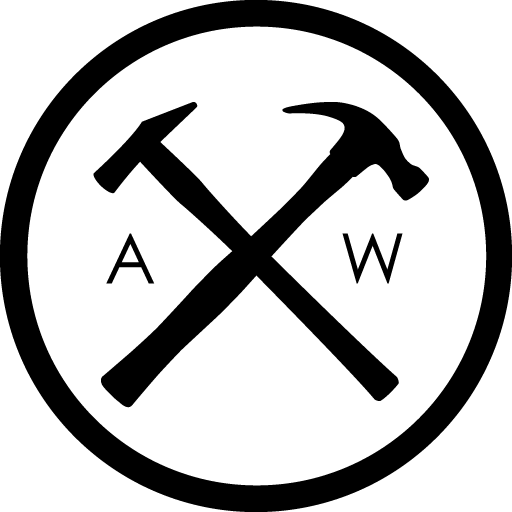Forge Build Part III: Finishing the Forge
Share

Painting the Forge
Using high temp primer and paint (rated at 1500°F) I painted the forge. I followed the instructions on the cans (2 coats each if I recall correctly). After the paint was on and dried, the instructions say to cure the paint in an oven. Since my wife didn’t want this beauty in her new oven, I got out the heat gun and slowly moved it around the forge. This paint has held up really well over time. The key is having the patience, which is hard for me at times.

Insulating the Forge
I lined the forge with a special ceramic fiber forge insulation, two 1″ thick layers. It isn’t cheap but very necessary (link to it on Amazon at the bottom). Once in the forge, I lightly sprayed water to the inside surface and I then thinned some ITC-100 refractory cement with water. The wetting of the insulation helps the cement adhere to the insulation. It is also best to dab it on with a brush and not use strokes. Keep the refractory cement stored properly as it will be used again. Once in a while, you will need to touch up as it is brittle and its good to have around for that.

Be sure to follow ALL of the safety instructions with the insulation, which includes wearing gloves and a respirator.

You can put the firebricks on the bottom before or after the cement coating. I put them in prior and it worked fine. These come in a box of 6 and I used two. If you ever use borax flux (for forge welding) it will wear on the bricks over time. Having extra around never hurt. 
Firing the Forge
With the forge done, I went outside and fired it up. I was a bit nervous and excited before the initial firing, but I kept safety at the forefront of my thoughts. I put the tank as far back as possible, and I lit it by putting in a small piece of scrap wood that I lit with a torch and then slowly let the gas in.

Now I am more comfortable and light it directly with the MAPP torch. Before lighting, I set the system pressure to about 10 PSI before opening the valves to the burners. Once pressurized, I drop the chokes on the burners and expose the intakes, insert the end of the MAPP torch (it has a curved burner so my hands with gloves on are off to the side) and open the main gas valve then the burner valves.
When I shut it down, I make sure to close the chokes, disconnect the gas, and let the forge sit and cool. I make sure to not start it up if I don’t have the time to hang around while it cools, which isn’t fast.

I know this isn’t very detailed, but a long read (it took even longer to make) but I hope you enjoyed it. If you want to build your own, be safe, I am not responsible for your actions. This is how I went about making mine.
Tools & Materials Used
- Bernzomatic TS8000 Mapp Gas Torch – I use this to ignite the burners as well as many other handy uses throughout the shop.
- High Temp Black Spray Paint – This paint has held up very well and easy to apply.
- High Temp Primer – A must before applying the actual paint if you want the paint to last.
- Refractory Cement – Used to coat the insulation.
- Ceramic Fiber Insulation – A 2″ layer is needed, so make sure you get enough!
- (Book) Gas Burners for Forges, Furnaces, and Kilns – This book was invaluable to me through this process.



